In Vermont, a haven for diverse birdlife, nine owl species gracefully navigate the state’s woodlands, fields, and skies.
These nocturnal raptors contribute to the state’s rich biodiversity with their distinctive calls and mesmerizing appearances.
Each species brings a unique charm to Vermont’s avian tapestry, from the iconic hoots of the Barred Owl to the crepuscular flights of the Short-eared Owl.
As we delve into the intriguing world of these winged predators, we’ll uncover their varied sizes, behaviors, and roles within the state’s ecosystems.
Join us to explore the nine captivating owl species that call Vermont home, understanding their significance and the conservation efforts required to sustain their presence in this picturesque landscape. Stay focused.
9 Owls in Vermont
Check out the diverse world of owls in Vermont, each with its unique characteristics and lifestyles.
From the Barred Owl’s haunting calls to the short-eared Owl’s stealthy hunting tactics, discover the fascinating details about these birds, their habitats, and the conservation efforts essential for their well-being.
1. Barred Owl
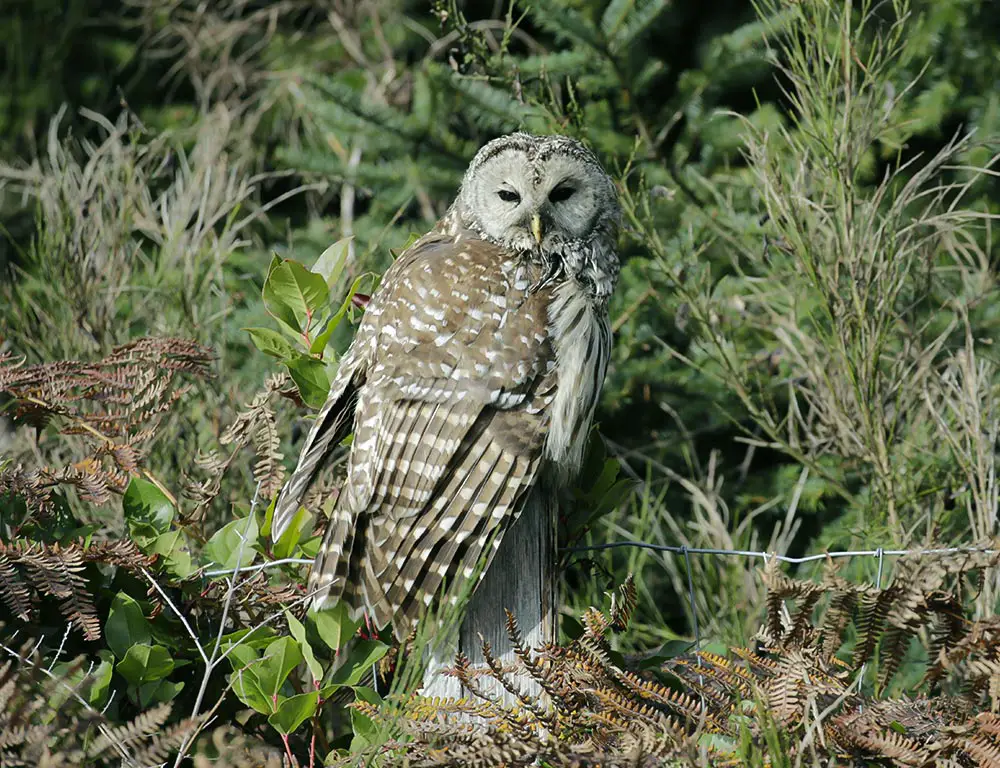
- Scientific name: Strix varia
- Life span: 10-15 years
- Size: 16-25 inches
- Weight: 1-2.5 pounds
- Food: Small mammals, birds, amphibians, and invertebrates
- Wingspan: 38-49 inches
- Status: Common
The Barred Owl is a large, stocky owl with a distinctive barred pattern on its feathers, and it is known for its haunting hooting calls in the forests of Vermont.
These owls are primarily nocturnal, hunting at night by perching on branches and swooping down to catch prey.
Their diet includes small mammals like mice, voles, and rabbits, but they are versatile hunters and may also consume birds, amphibians, and invertebrates.
Barred Owls are well-adapted to forested environments, and their excellent low-light vision and keen hearing make them skilled hunters in dense woodlands.
They are also known to wade into shallow water to catch fish. They nest in tree cavities, often using old nests of other large birds.
Barred Owls have a monogamous mating system, and their hooting calls play a significant role in communication between mates.
2. Great Horned Owl
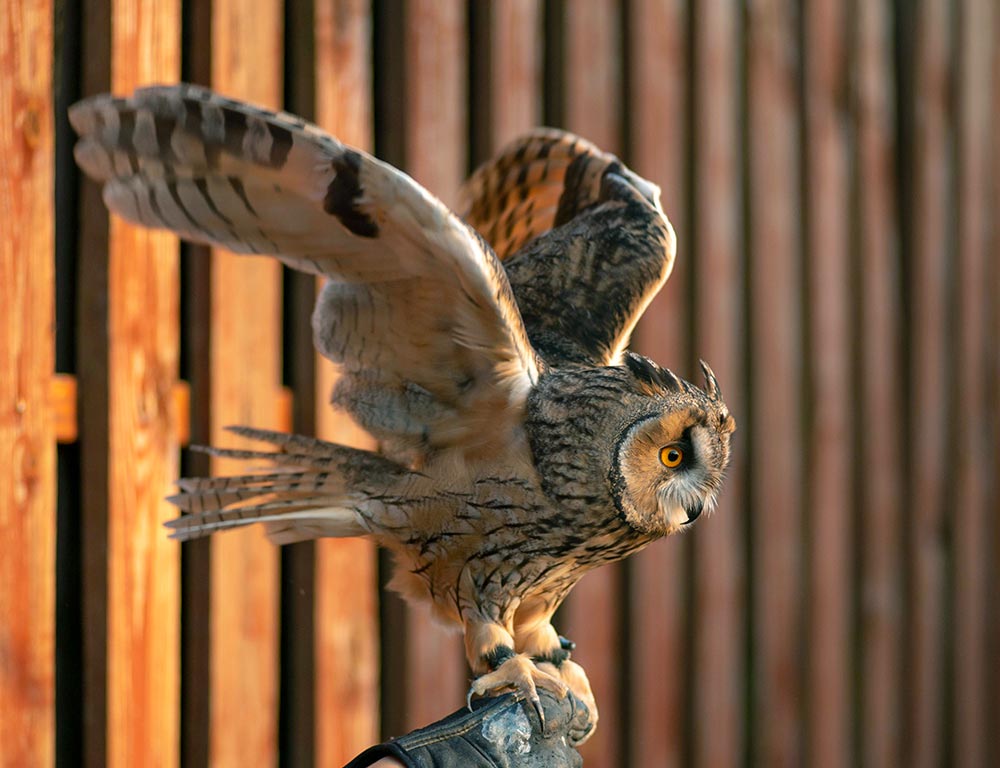
- Scientific name: Bubo virginianus
- Life span: 5-15 years
- Size: 18-25 inches
- Weight: 2-5.5 pounds
- Food: Mammals, birds, reptiles, and large insects
- Wingspan: 39-57 inches
- Status: Common
The Great Horned Owl, a formidable predator, is a year-round resident of Vermont.
Named for its prominent ear tufts that resemble horns, this owl is highly adaptable, inhabiting various environments, from forests to urban areas.
Nocturnal by nature, they hunt at night, using their keen vision and powerful talons to capture diverse prey.
Great Horned Owls are opportunistic hunters, feeding on mammals such as rabbits and squirrels and even larger prey like skunks and small deer.
They also consume birds, reptiles, and large insects. These owls are known for their hooting calls, establishing territories, and communicating with their mates.
Nesting in trees or on cliffs, Great Horned Owls often reuse abandoned nests of other birds. They are early nesters, with eggs laid as early as January.
While not considered endangered, their populations can be impacted by habitat destruction and human activities.
3. Barn Owl
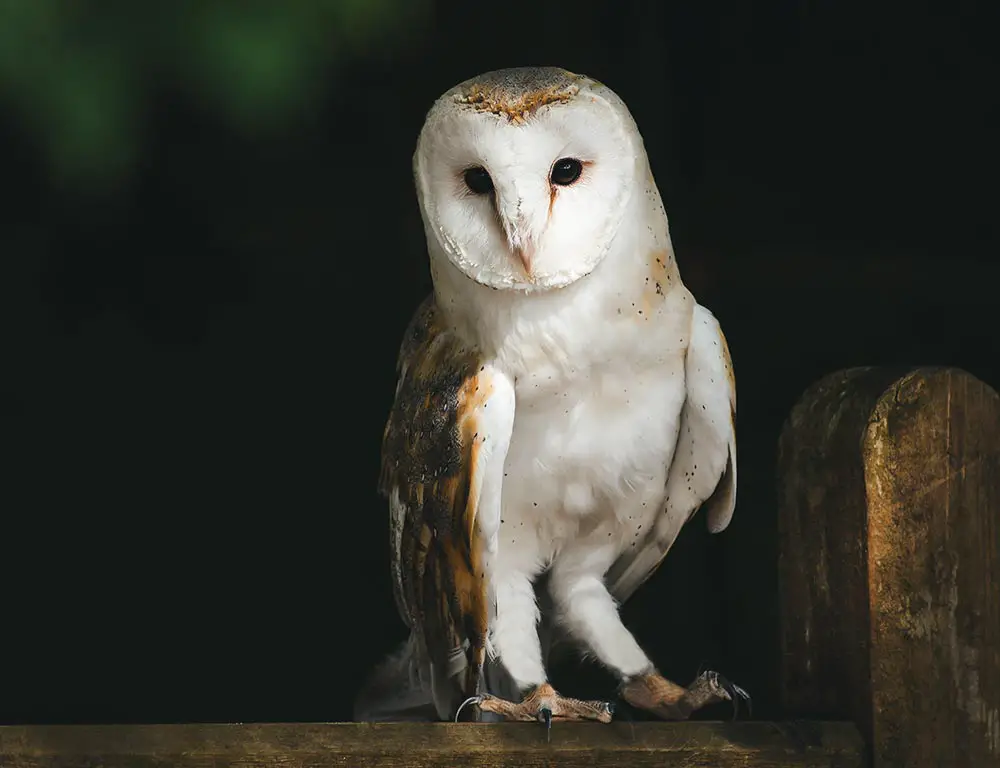
- Scientific name: Tyto alba
- Life span: 2-5 years (in the wild)
- Size: 12-15 inches
- Weight: 12-16 ounces
- Food: Small mammals, especially rodents
- Wingspan: 42-43 inches
- Status: Declining
The Barn Owl is a distinctive species known for its heart-shaped facial disc and pale plumage. Primarily nocturnal, these owls are efficient hunters of small mammals, particularly rodents.
Their unique facial features aid in sound localization, helping them locate prey by sound alone.
Barn Owls are cavity nesters, often utilizing structures such as barns, silos, or tree hollows. They have a monogamous mating system and may use the same nesting site for several years.
Conservation efforts for Barn Owls in Vermont focus on creating and maintaining suitable nesting sites, reducing the use of pesticides, and raising awareness about the importance of these birds in controlling rodent populations.
4. Snowy Owl
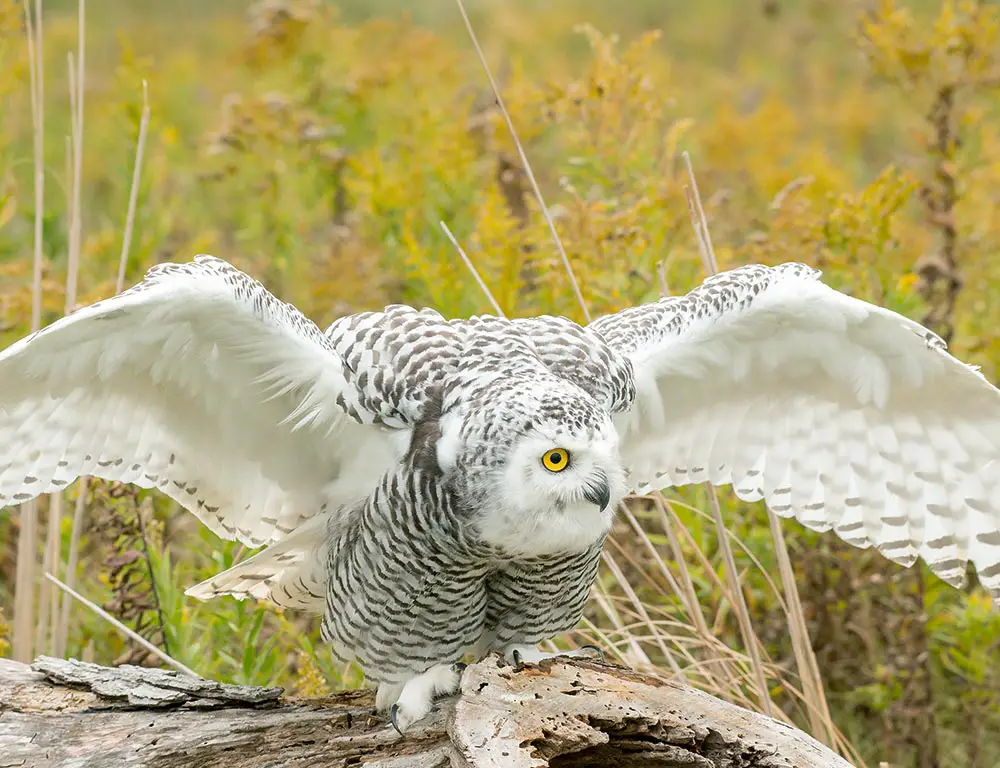
- Scientific name: Bubo scandiacus
- Life span: 9-10 years
- Size: 20-28 inches
- Weight: 3.5-6.6 pounds
- Food: Lemmings, small mammals, birds
- Wingspan: 49-59 inches
- Status: Irregular visitor
The Snowy Owl, a stunningly white bird with distinctive black markings, is a rare winter visitor to Vermont.
These owls are well-adapted to the Arctic tundra, where they breed. During the winter, some Snowy Owls migrate south in search of food.
Snowy Owls are diurnal hunters, taking advantage of the continuous daylight in the Arctic summer.
Their diet consists mainly of lemmings, but they also prey on other small mammals and birds. Unlike other owls, Snowy Owls are known for being active during the day.
In Vermont, sightings of Snowy Owls are sporadic and often associated with irruptions, which are irregular migrations driven by variations in prey abundance in their breeding grounds.
5. Eastern Screech Owl
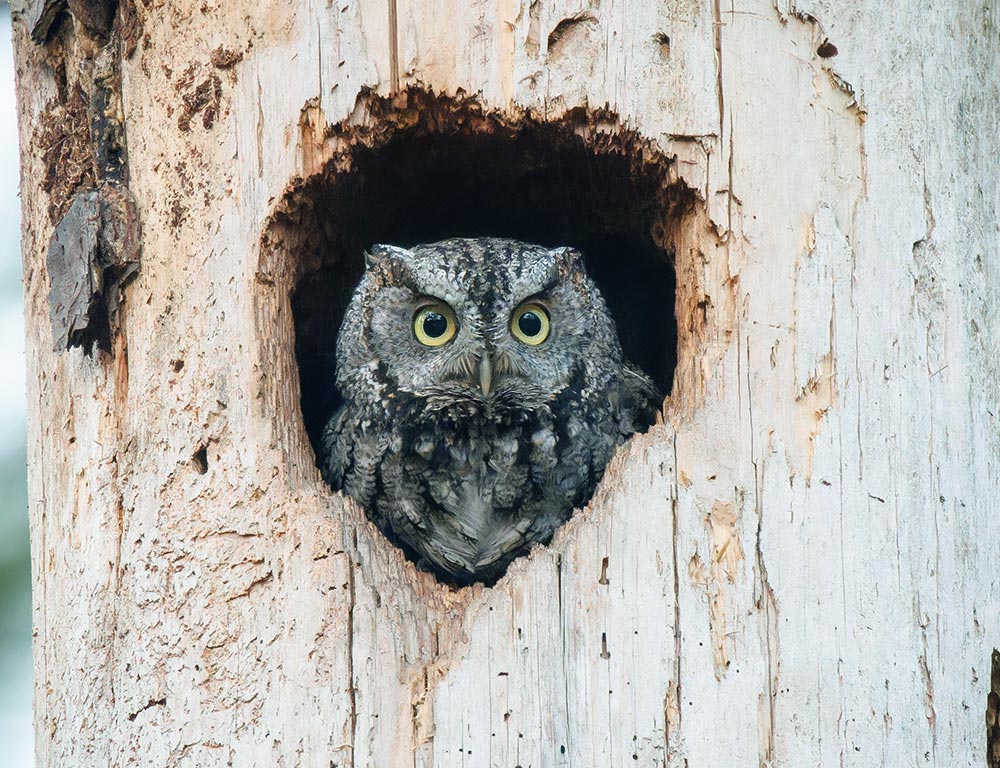
- Scientific name: Megascops asio
- Life span: 9-10 years
- Size: 6-10 inches
- Weight: 4-9 ounces
- Food: Small mammals, birds, insects
- Wingspan: 18-24 inches
- Status: Common
The Eastern Screech Owl is a small, nocturnal owl with two color morphs: gray and reddish-brown. Despite their small size, these owls are skilled hunters and have adapted well to various environments, including suburban areas.
They are known for their distinctive trilling and whinnying calls during the night.
Eastern Screech Owls primarily feed on small mammals such as mice and voles, as well as birds and insects. They have a diverse diet and use their keen hearing and night vision to locate prey.
These owls nest in tree cavities and may also use nest boxes provided by humans.
Their cryptic coloration helps them blend into their surroundings, protecting them from predators.
Although considered common, Eastern Screech Owls can face threats such as habitat loss and vehicle collisions.
6. Northern Saw-whet Owl
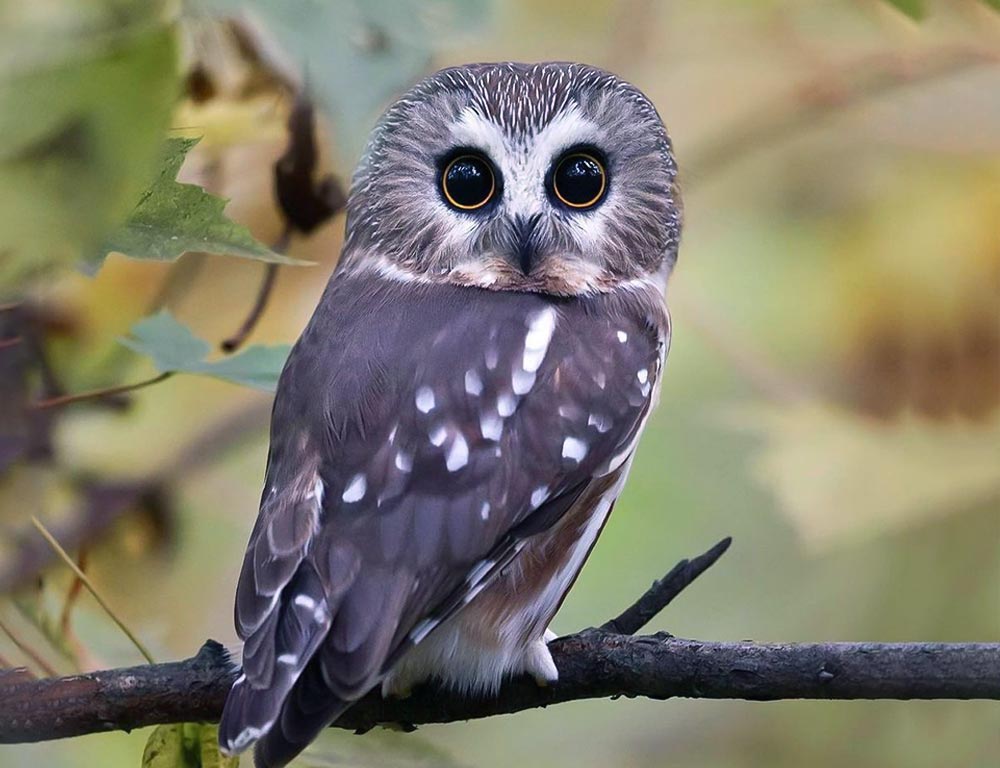
- Scientific name: Aegolius acadicus
- Life span: 3-7 years
- Size: 7-8 inches
- Weight: 2-5 ounces
- Food: Small mammals, birds, insects
- Wingspan: 16-18 inches
- Status: Common
The Northern Saw-whet Owl is a small owl with a distinctive sawing or tooting call that is often heard during their breeding season.
Despite their small size, these owls are efficient hunters, preying on small mammals, birds, and insects. They are nocturnal and well-adapted to forested environments.
These owls nest in tree cavities and may also use abandoned woodpecker holes. They are known for their cryptic plumage, which helps them blend into their surroundings.
Northern Saw-whet Owls are migratory, and their movements can vary seasonally based on food availability.
7. Long-eared Owl
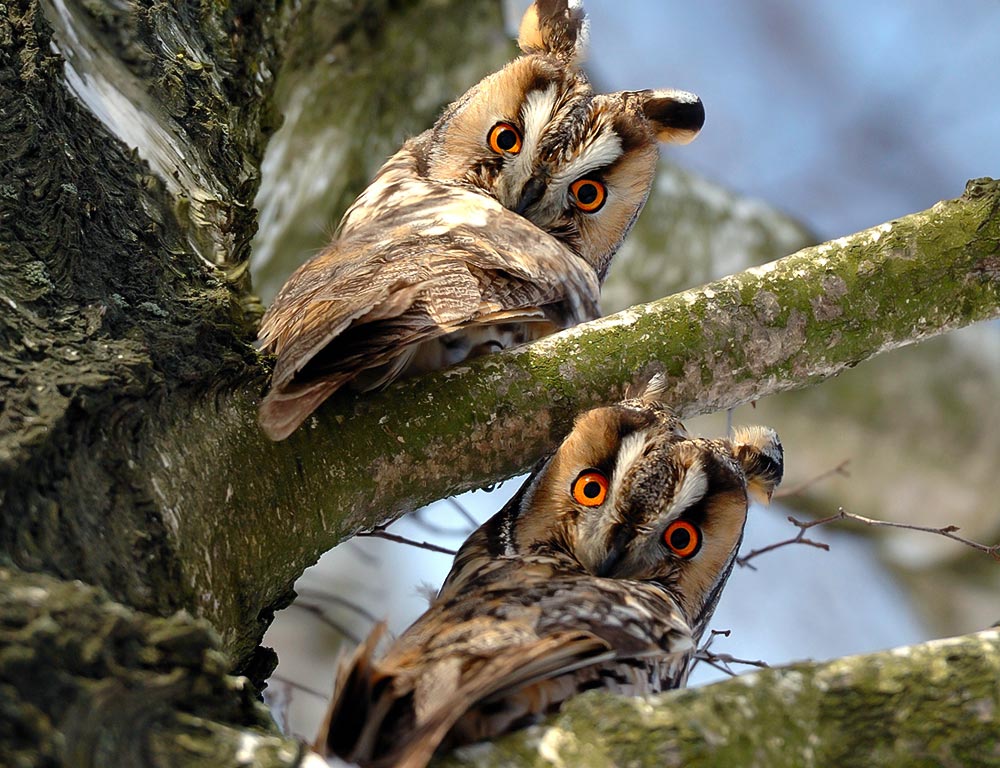
- Scientific name: Asio otus
- Life span: 4-10 years
- Size: 13-16 inches
- Weight: 7-16 ounces
- Food: Small mammals, birds
- Wingspan: 35-39 inches
- Status: Common
The Long-eared Owl is named for its distinctive long ear tufts, which are used for communication and display rather than hearing. These medium-sized owls are nocturnal hunters that feed on small mammals and birds.
They are often found in coniferous and deciduous woodlands and in open areas with scattered trees.
Long-eared Owls are known for their roosting behavior, gathering in communal roosts during the non-breeding season.
They are skilled at using their silent flight and excellent hearing to locate and capture prey. These owls build nests in trees, often using old crow or raptor nests.
While considered common, Long-eared Owls may face threats such as habitat loss and disturbance to their roosting sites.
8. Short-eared Owl
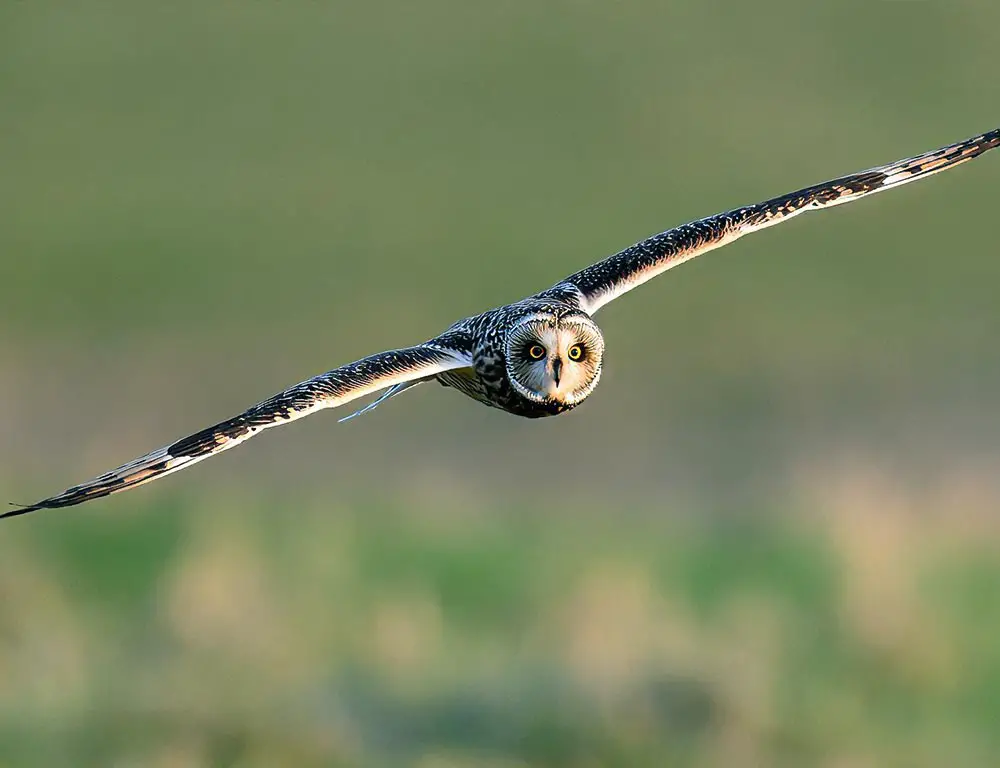
- Scientific name: Asio flammeus
- Life span: 3-5 years
- Size: 13-17 inches
- Weight: 7-16 ounces
- Food: Small mammals, birds
- Wingspan: 33-43 inches
- Status: Common
The Short-eared Owl is a medium-sized owl with distinctive facial disks and short ear tufts.
Unlike many other owls, they are crepuscular, which is most active during dawn and dusk. Short-eared Owls are often found in open habitats such as grasslands, marshes, and agricultural fields.
These owls feed primarily on small mammals, including voles, mice, and occasionally birds. They are skilled hunters, flying low over the ground and using their keen sense of hearing to locate prey.
Short-eared Owls may engage in aerial displays and courtship flights during the breeding season.
Conservation efforts for Short-eared Owls involve preserving their open habitat, as they are particularly sensitive to land-use changes.
9. Great Grey Owl
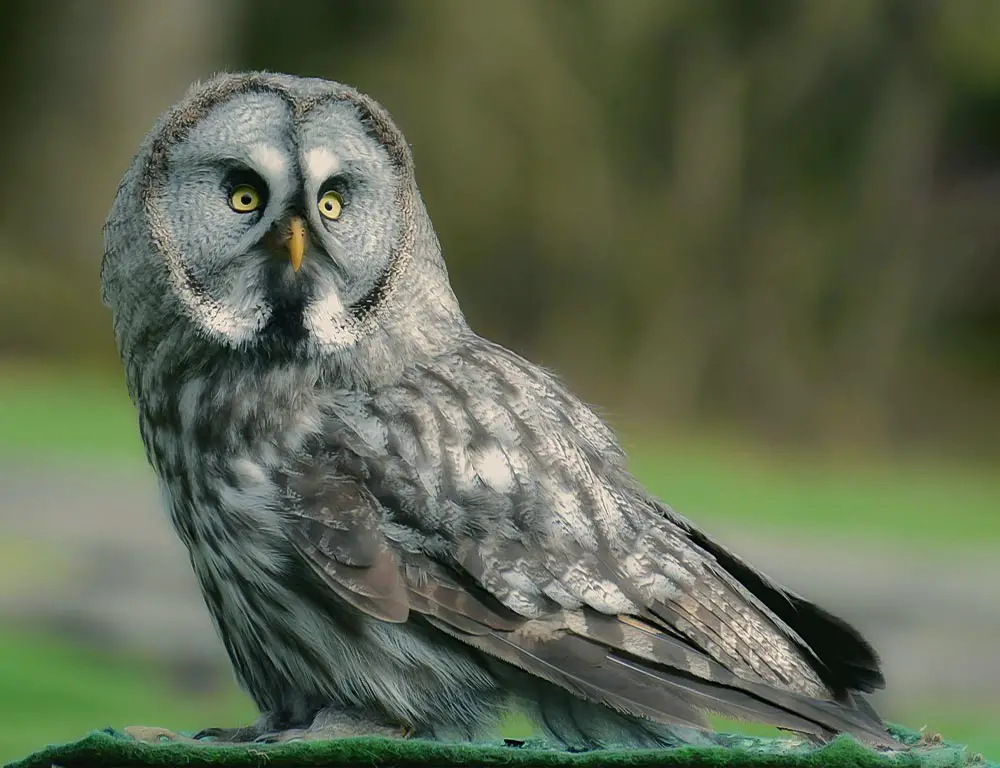
- Scientific name: Strix nebulosa
- Life span: 5-10 years
- Size: 24-33 inches
- Weight: 1.5-5.5 pounds
- Food: Small mammals, birds
- Wingspan: 54-60 inches
- Status: Uncommon but stable
The Great Grey Owl is one of the largest owl species, known for its large facial disc and striking appearance. They are well-adapted to northern forests and coniferous habitats.
Despite their large size, Great Grey Owls have a relatively light build, allowing them to hunt in densely wooded areas.
These owls primarily feed on small mammals, including voles, mice, and squirrels, and they are known for their ability to locate prey under the snow.
Great Grey Owls have a low reproductive rate, and their populations can be affected by fluctuations in prey availability.
Wrapping Up
Vermont’s owls are enchanted with their varied sizes, behaviors, and habitats. These majestic birds play crucial roles in Vermont’s ecosystems, from the common Barred Owl to the elusive Great Grey Owl.
Conservation efforts are imperative to protect their habitats and ensure the continuation of these enchanting species.
As guardians of the night, each owl contributes to the intricate tapestry of Vermont’s wildlife, making it vital to appreciate and safeguard their presence in our natural landscapes. Best of luck.